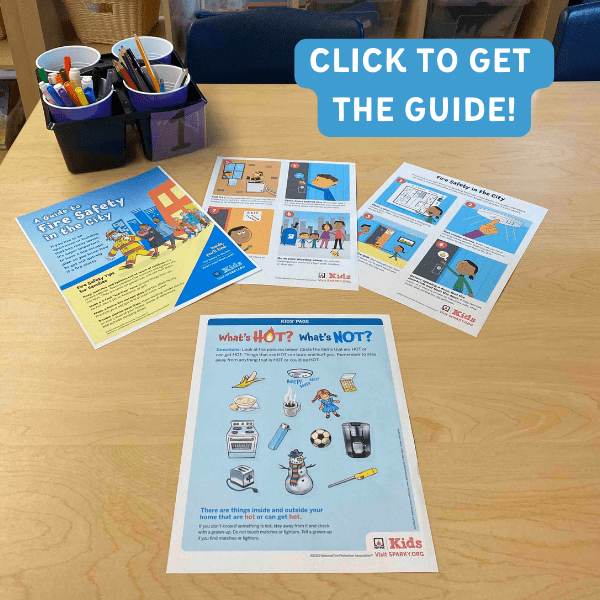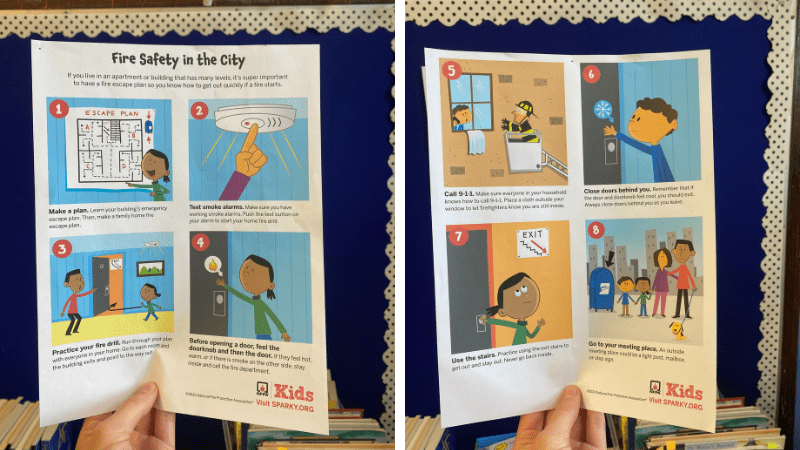[ad_1]
In early 2021, New York City and Philadelphia both suffered catastrophic apartment fires that left a total of 29 dead, including 17 children. The tragic losses sent shock waves across the country. As teachers, we educate and nurture children. Loving our students is second nature, so any tragedy involving children tends to have an impact on the hearts of teachers. As an educator living and working in an urban Chicago school district, these events hit me hard. The majority of my third grade students live with their families in condos or apartments in mid- to high-rise buildings, where evacuation can be challenging in the event of an emergency. This year, I’m eager to add to our classroom fire safety discussion with a special new resource from the National Fire Protection Association.
Get the “Fire Safety in the City” Family Guide
Teaching With the “Fire Safety in the City” Family Guide
This year, I got my hands on the brand-new “Fire Safety in the City” family guide, which includes:
- A practical list of safety tips for urban-dwelling families.
- A step-by-step guide to creating and sticking to an escape plan.
- A kids’ activity to help children identify common household items that could pose a potential safety or fire hazard.
I kicked off our class conversation with a think-pair-share about what fire safety looks, sounds, and feels like. I helped guide the discussion toward the significance of the topic and used student responses to create an anchor chart for my visual learners. Next, I posed a question: How does fire safety in a high-rise building differ from fire safety in a single-family home? I then opened the floor for discussion. My students had some very logical and insightful ideas!
Finally, students received the guide and took turns volunteering to read each safety tip and fire escape plan step. They had a blast completing the activity in pairs and sharing their findings during our class-wide discussion and review. I coupled the safety kit with an NFPA downloadable handout for their take-home folders to encourage them to continue the discussion at home.
I also found that NFPA’s Sparky School House site offers tons of fire safety resources for school and home, including grade-leveled lesson plans consistent with national ELA standards using an embedded fire safety theme. Teachers and families can find a variety of informative videos, music, and games to support the fire safety conversation in a developmentally appropriate and engaging way.
Continuing the Conversation
As teachers, we do our best to educate, nurture, and protect our students in the classroom. However, we have little to no control once they leave our school at the end of the day. The best thing we can do for our students is to provide the space for these significant conversations and offer families tools and resources designed to support and continue the conversation at home. There are no two ways about it—putting plans into action saves lives.
Interested in the “Fire Safety in the City” family guide mentioned in this article? Get it here.
[ad_2]
Source link



